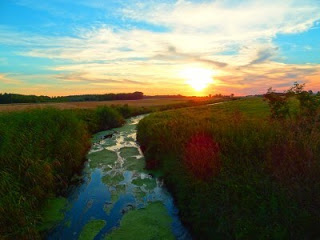The following factors affect the duty of water:

1. Method and system of irrigation
(i) Furrow method ⇢ high duty
(ii) flood irrigation ⇢ less duty than the furrow system
(iii) Perennial system ⇢ high duty
(iv) Inundation system ⇢ low duty than the perennial system
(v) basin irrigation ⇢ low duty
(vi) Flow system ⇢ low duty
(vii) Lift irrigation ⇢ High duty
(viii) Un-controlled flooding ⇢ low duty
(ix) The duty of water is high for sprinkler and drip irrigation methods, as compared to the surface irrigation method
2. Types of Crops
Different crops need completely different quantities of water. So, the duty of water varies from crop to crop. The crops that need a large volume of water have a lower duty of water than for the crops which need less amount of water.
3. Quality of irrigation water
(i) Harmful salt and alkali content leads to a lower duty of water due to the wastage of a considerable amount of water.
(ii) Fertilizing matter in water increases the duty of the water.
4. Method of Cultivation
If the land is correctly ploughed up to the specified depth and created quite loose before irrigating, the soil can have high water-holding capability within the root zone of the plants. This may cut back the quantity of watering and hence result in a higher duty of water.
5. Time of irrigation
(i) Within the initial stages, the land to be cultivated might, not be properly levelled arid hence more than the required amount of water may be applied, which leads to a lower duty of water.
(ii) The gradual rise of the water table with time because of continuous irrigation will make water accessible in the root zone of the plants, therefore comparatively less amount of water is going to be needed to be applied, which will result in a higher duty of water.
6. Canal Condition
(i) Earthen canal⇢percolation loss is high ⇢which leads to a lower duty of water.
(ii) Lined canal⇢percolation loss will be less⇢hence, the duty of water will be high.
7. The climatic condition of the area
The climatic condition which affects the duty of water is
(i) Temperature ⇢ high temperature ⇢loss of water will be more due to Evapotranspiration ⇢so, low duty.
(ii) Higher wind velocity – loss of water will be more due to evaporation -low duty.
(iii) Humidity⇢high humidity⇢loss of water will be less due to Evapotranspiration⇢so, high duty.
(iv) Rainfall⇢increase in duty
8. Base periods of crops
When the base period of a crop is long, more water may be required so leading to a lower duty of water.
9. The character of soil and subsoil of the canal
(i) Coarse-grained soil⇢ seepage and percolation losses are high⇢so less duty.
(ii) Fined grained soil⇢ Percolation losses are less ⇢so, high duty.
10. Method of assessment
(i) Volumetric method⇢more duty(economical use of water).
(ii)crop rate or area basis⇢less duty(more water to be used).
Read Also: